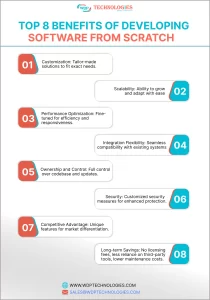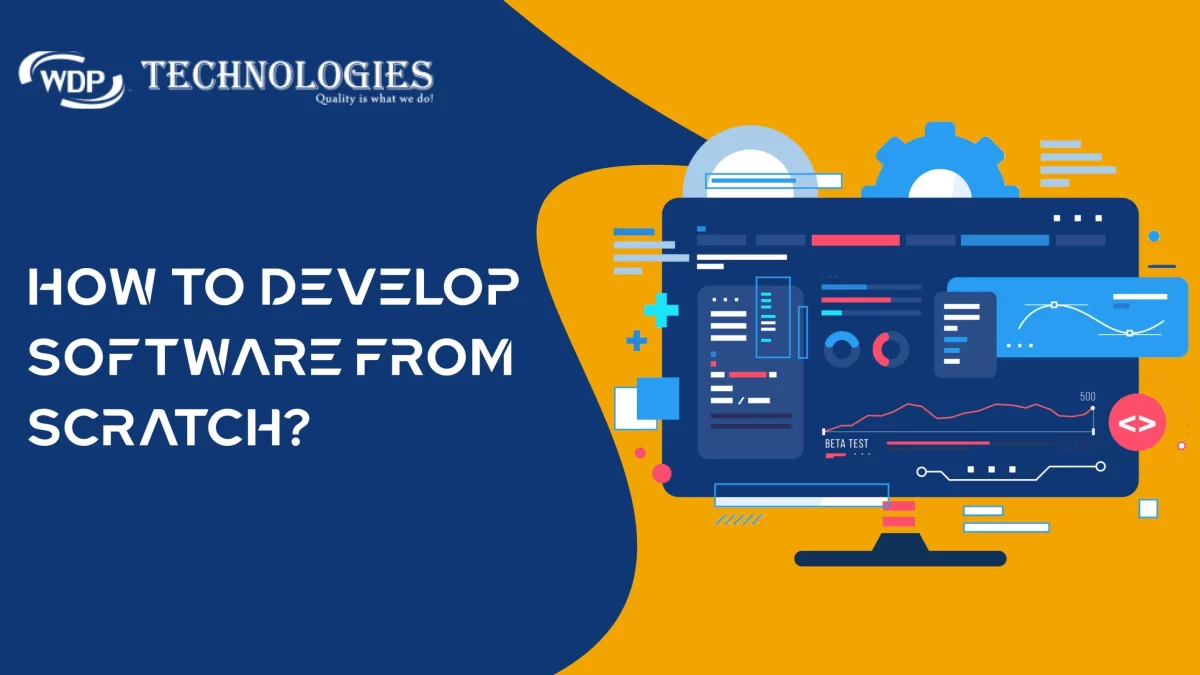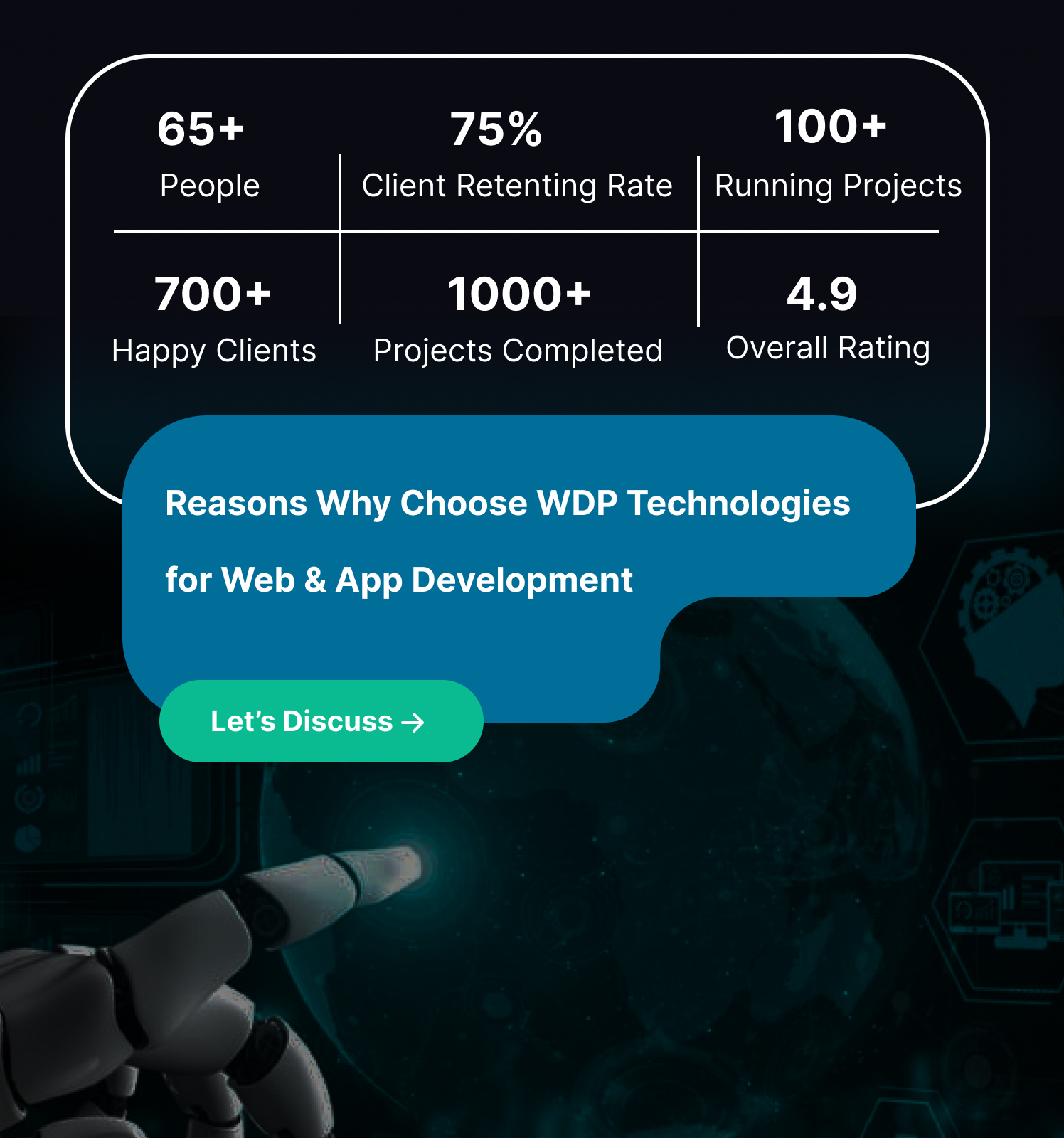In today’s digital age, where technology permeates every aspect of our lives, the importance of software development cannot be overstated. From the apps on our smartphones to the complex systems powering industries, software is the driving force behind innovation, efficiency, and progress.
Software development is not just about writing code. It’s about creating solutions that improve our lives, businesses, and the world around us. In this blog, we’re going to talk about how to develop software from scratch and why it is so important.
Software Development Market Stats
The software development market is booming! Here are some key statistics to paint a picture:
🔹Market Size and Growth: The global custom software development market was valued at $29.29 billion in 2022 and is expected to reach a staggering $146.18 billion by 2030, with a compound annual growth rate (CAGR) of 22.4%.
🔹Demand for Developers: There were 24.3 million active software developers worldwide at the end of 2021, and the demand is only rising. With the increasing importance of software in every aspect of our lives, skilled developers are a valuable asset.
🔹Outsourcing Trends: The global IT outsourcing market is massive, valued at $526.6 billion in 2021, and is projected to reach even greater heights by 2025. This trend highlights the need for companies to access skilled developers globally.
🔹Focus on Specific Areas: Enterprise applications make up a significant portion of software development projects, with nearly 85% falling into this category. Additionally, there’s strong growth in areas like business automation and e-commerce.
These statistics showcase the robust state of the software development market and its continuing growth trajectory. As our reliance on technology strengthens, the demand for developing software from scratch and skilled developers will only intensify.
Importance of software development
Before knowing how to build software from scratch it is necessary to know its importance. The importance of software development is immense in our modern world. Here’s why it matters:
1. Innovation:
Software develop drives innovation by creating new technologies, products, and solutions. From mobile apps to artificial intelligence, software developers are constantly pushing the boundaries of what’s possible.
2. Efficiency:
Software streamlines processes and automates tasks, making businesses more efficient and productive. It saves time and resources by reducing manual labor and human error.
3. Connectivity:
Software connects people and devices, enabling communication and collaboration on a global scale. Social media, messaging apps, and cloud services all rely on software to keep us connected.
4. Economic Growth:
The software industry contributes significantly to economic growth, creating jobs, attracting investment, and driving innovation. Tech hubs like Silicon Valley are hotbeds of economic activity thanks to software development.
5. Education:
Software has transformed education by providing access to online learning resources, educational games, and interactive tools. It makes learning more engaging, accessible, and personalized for students of all ages.
6. Creativity:
Develop Software fosters creativity by enabling collaboration and experimentation. Developers work together to solve complex problems and innovate new solutions, driving progress in diverse fields.
7. Security:
With the rise of cyber threats, software developers play a crucial role in ensuring the security and reliability of digital systems. They implement safeguards and protocols to protect data and privacy.
8. Digital Transformation:
In an era of digital transformation, software development is key to adapting and thriving in a rapidly changing landscape. Businesses that embrace new technologies can gain a competitive edge and stay ahead of the curve.
Benefits of Developing Software From Scratch
Building software from scratch, rather than using pre-existing solutions or frameworks, offers several significant benefits. Let’s explore some of the advantages:

1. Customization:
Develop software from scratch allows for complete customization to meet specific business needs and requirements. Off-the-shelf solutions may not always align perfectly with the unique processes or objectives of a business. By developing from scratch, developers have full control over every aspect of the software, ensuring it perfectly fits the organization’s needs.
2. Scalability:
Custom-built software can be designed with scalability in mind from the ground up. As businesses grow and evolve, their software needs may change. Building software from scratch allows developers to create a flexible architecture that can easily adapt to increased user loads, expanded functionalities, and changing business priorities.
3. Performance Optimization:
Custom software can be optimized for performance, resulting in faster response times, better resource utilization, and overall improved efficiency. Developers have the freedom to fine-tune the codebase, database schema, and infrastructure to achieve optimal performance tailored to the specific requirements of the application.
4. Integration Flexibility:
Building software from scratch provides greater flexibility when integrating with existing systems, APIs, or third-party services. Custom integrations can be designed to seamlessly connect with other software components, ensuring smooth data flow and interoperability across the organization’s tech stack.
5. Ownership and Control:
With custom-built software, organizations have full ownership and control over the entire development process, intellectual property, and data. This means they are not dependent on external vendors or subject to licensing restrictions, giving them greater autonomy and strategic advantage.
6. Security:
Custom software can be developed with security as a primary consideration, implementing robust encryption, authentication mechanisms, and access controls tailored to the specific needs of the application. By building security features directly into the software architecture, organizations can mitigate the risk of data breaches and cyber attacks.
7. Competitive Advantage:
Developing custom software can provide a competitive advantage by enabling unique features, workflows, or user experiences that differentiate the organization from its competitors. Custom solutions tailored to the specific needs of the target audience can help attract and retain customers in a crowded market.
8. Long-term Cost Savings:
While the initial investment in custom software development may be higher compared to off-the-shelf solutions, the long-term cost savings can be significant. Custom software eliminates recurring licensing fees, vendor lock-in, and the need for costly customizations or workarounds to fit the organization’s needs.
Understanding How to Build Software from Scratch
Understanding how to build software from scratch is crucial for ensuring the successful planning, design, development, testing, deployment, and maintenance of software applications. The SDLC consists of several distinct phases, each with its own significance in the development process. Let’s explore each phase and its importance:
1. Requirement Gathering:
In this initial phase, project stakeholders collaborate to gather and document requirements for the software. This involves understanding the needs of end-users, business objectives, functional requirements, and technical specifications. Gathering accurate and comprehensive requirements is essential for aligning the software with the needs and expectations of stakeholders. It forms the foundation for the entire development process and ensures that the end product meets user needs.
2. Planning:
The planning phase involves defining project scope, setting goals, establishing timelines, allocating resources, and creating a roadmap for the development process. It also includes identifying potential risks and developing strategies to mitigate them. Planning sets the direction and framework for the development project, helping teams stay organized, focused, and on track. It allows for effective resource allocation, risk management, and project management, ultimately leading to successful project delivery.
3. Design:
During the design phase, developers create a blueprint for the software architecture, user interface, database schema, and system components. This phase focuses on translating requirements into technical specifications and creating a detailed plan for implementation. The design phase translates requirements into technical specifications and provides a blueprint for implementation. It ensures that the software architecture is scalable, maintainable, and aligned with best practices, laying the groundwork for efficient development and future enhancements.
4. Choose Technology Stack:
Selecting the appropriate technology stack is a critical decision that influences the software’s performance, scalability, and compatibility. This involves choosing programming languages, frameworks, libraries, and databases. The technology stack must align with the project requirements and facilitate efficient development and maintenance.
5. Development:
In the development phase, programmers write code according to the design specifications outlined in the previous phase. This involves coding, unit testing, and integrating individual components to build the software application. Development involves writing code according to design specifications and building the software application. It is where the vision outlined in the planning and design phases starts to take shape, with developers bringing concepts to life through programming and implementation.
6. Testing:
The testing phase involves rigorous quality assurance (QA) and testing to identify and fix defects, bugs, and issues in the software. This includes functional testing, performance testing, security testing, and user acceptance testing (UAT) to ensure the software meets requirements and performs as expected. Testing ensures that the software meets quality standards, functions as intended, and is free of defects and issues. It helps identify and fix bugs early in the development process, reducing the risk of costly errors and improving the overall reliability and performance of the software.
7. Deployment:
Once the software has been thoroughly tested and approved, it is deployed to the production environment for end-users to access and use. This phase involves deploying the application, configuring servers, migrating data, and training users as necessary. Deployment involves releasing the software to production environments and making it available to end-users. It requires careful planning, coordination, and testing to ensure a smooth transition from development to production, minimizing downtime and disruption.
8. Maintenance:
The maintenance phase involves ongoing support, updates, and enhancements to the software to address issues, add new features, and improve performance. This phase ensures that the software remains relevant, secure, and efficient over time. Maintenance ensures that the software remains functional, secure, and up-to-date after deployment. It involves addressing issues, applying updates, and making enhancements to meet changing requirements and user needs over time.
9. User Training & Support:
To facilitate successful user adoption, developers provide training materials or sessions for end-users. Establishing a robust support system ensures timely resolution of user queries and issues, contributing to a positive user experience.
10. Feedback and Iteration:
Finally, the software development process is not a linear path. Gathering feedback from users and stakeholders is an ongoing practice. This feedback informs iterative improvements and guides future development cycles, fostering continuous enhancement and adaptability to evolving needs. Regular communication and responsiveness to user input are key elements of a successful software development lifecycle.
Software Development Models Based on Sourcing
Software development models based on sourcing refer to the ways in which software development tasks are distributed or sourced among different entities or locations. Various sourcing models have evolved to accommodate different organizational needs, cost considerations, and skill availability. Here are some common software development models based on sourcing:
1. Onshore Development:
Onshore development involves executing all software development activities within the same country as the client or primary business location. This model promotes direct communication, cultural understanding, and collaboration due to shared geographic proximity. However, it may entail higher costs compared to offshore or nearshore alternatives, making it essential for organizations to balance the benefits of local presence with budget considerations.
2. Offshore Development:
Offshore development entails outsourcing software development tasks to a team located in a different country, often chosen for its lower labor costs. This model offers significant cost savings and access to a global talent pool. However, it comes with challenges such as potential communication barriers, cultural differences, and the need for effective management of remote teams. Despite these challenges, offshore development can be a strategic choice for organizations seeking cost-effective solutions.
3. Nearshore Development:
In nearshore development, organizations outsource software development to teams located in nearby countries, often within the same region or time zone. This model provides advantages such as reduced travel costs and overlapping time zones, leading to more convenient collaboration. While nearshore development mitigates some challenges associated with offshore outsourcing, organizations may still encounter certain cultural and language differences.
4. Global Delivery Model:
The Global Delivery Model is a comprehensive approach that combines onshore, offshore, and nearshore development teams to create a globally distributed strategy. This model leverages the strengths of various locations, offering benefits such as cost-effectiveness, a diverse talent pool, and 24/7 development cycles due to time zone differences. However, it requires robust communication tools, effective project management, and coordination across different locations to ensure success.
5. Outsourcing:
Outsourcing involves delegating the entire software development process to an external third-party service provider. Organizations choose outsourcing for cost savings, access to specialized skills, and the ability to concentrate on core business functions. However, concerns about loss of control, potential quality issues, and the need for effective vendor management are factors that organizations must carefully consider when opting for this model.
6. In-House Development:
In-house development signifies that all software development activities are conducted by an organization’s internal team, without external outsourcing. This model provides direct control, better alignment with organizational goals, and potentially higher levels of trust and collaboration. On the downside, in-house development tends to be more expensive, may limit access to specific skills, and requires organizations to manage the entire development lifecycle internally.
7. Hybrid Model:
The Hybrid Model is a flexible approach that combines elements from various sourcing models to create a customized solution tailored to an organization’s specific needs. This model allows organizations to leverage the strengths of different approaches, providing flexibility and adaptability. However, successfully implementing a hybrid model requires careful planning and effective management to ensure a seamless integration of different sourcing strategies, making it a strategic choice for many organizations seeking a balanced approach.
Cost To Develop Software From Scratch
Building software from scratch can vary significantly in cost. While a typical range falls between $50,000 and $250,000, the price tag can be much lower or higher depending on your project’s complexity. The biggest cost factors include the size and features of your software. A simple app with basic functionality might cost less than $50,000, whereas a complex enterprise software with extensive features could reach millions.
The experience level and location of your development team also play a role – senior developers from developed countries typically charge more. Even the development approach itself can impact the cost. Traditional coding takes more time compared to using low-code platforms, which can be faster and potentially cheaper for simpler projects. To get a more specific estimate, consider using online cost calculators offered by development companies, or even better, discuss your project scope and features with a potential development partner. They can help you define your needs and choose the most suitable approach, giving you a more accurate idea of the investment required.
Why Choose WDP Technologies for Building Software From Scratch
Conclusion
Develop software from scratch is a complex yet rewarding endeavor. By following a systematic approach, staying agile, and prioritizing user feedback, you can create a robust and successful software product. Keep in mind that the development process is dynamic, and continuous improvement is key to staying competitive in the ever-evolving tech landscape.












